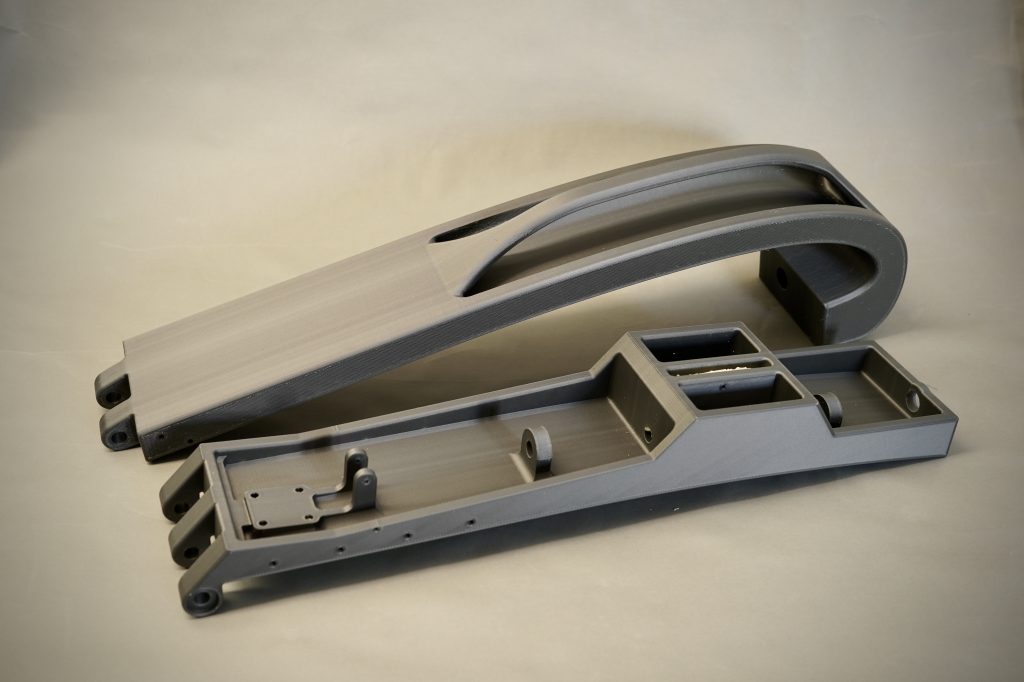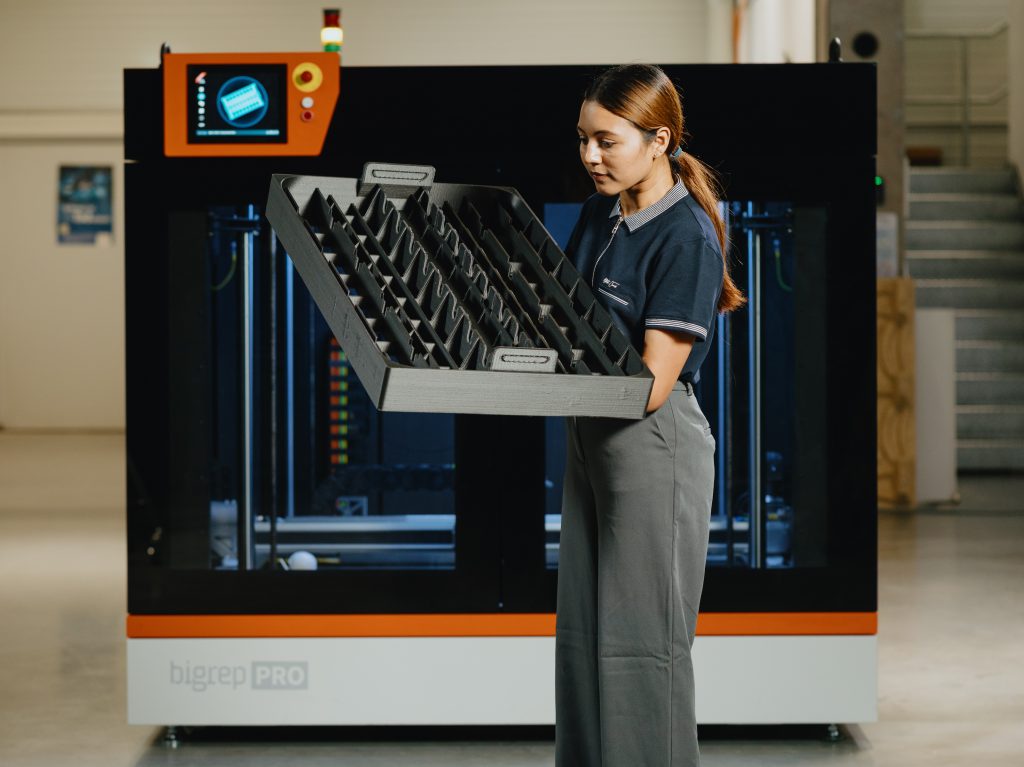Italian defense contractor Leonardo is working with UK based engineering company SFM Technology, and large-format 3D printer manufacturer BigRep, to 3D print key components for the Royal Navy’s AugustaWestland AW101 helicopters.
When being stored and transported on ships, the helicopters fold their blades up to make them more compact. A main rotor blade restraint cradle is used to stabilize the rotors, and prevent them from flapping in the wind. Leonardo found that their pre-existing restraint cradles weren’t living up to the required standards, and turned to SFM Technology’s AeroAdditive division to provide a solution.
Through extensive stress testing, SFM found that 3D printed parts performed better than their non printed counterparts, offering a lightweight and strong product. This new main rotor blade restraint cradle, measuring 900 x 230 x 160mm, is being billed as the first of its kind to be created using AM technology.

Utilizing BigRep Pro printer and Hi-Temp CF material
In order to develop and manufacture the restraint cradles, SFM chose to leverage AM technology from BigRep. “We had a look at many aspects of 3D printing. We must look at cost, efficiency, and of course, the size, which pushed us to BigRep”, commented Gary Wilson, head of Technical Sales at SFM’s AeroAdditive division.
Due to the scale of production required for this project, SFM Technology chose to use the BigRep Pro 3D printer. This industrial 3D printer has a 1 cubic meter build volume and can produce parts at scale for all stages of the manufacturing process, making it ideal for SFM’s end-use part requirements. “We looked at the BigRep Pro as we had to look at a production 3D printer, which I believe the BigRep Pro can provide”, continued Wilson. “The machine is used as a production machine, so every rotor blade restraint cradle will be going to the end user”.
Offering automated print bed and extruder calibration, the BigRep Pro has significantly increased the speed and efficiency of SFM Technology’s production process. For instance, 30 cradles, consisting of 60 halves, have been printed since January, three-quarters more than if traditional methods had been used. “3D printing is far quicker, as we don’t have any adjustments to make, or if we do, they’re very minor and can be quickly overcome”, said Wilson.
In conjunction with the BigRep Pro printer, SFM are leveraging BigRep’s Hi-Temp CF carbon fiber reinforced material. This high-strength engineering-grade filament possesses a high heat deflection temperature of 115℃, and a 65 MPa tensile strength. Due to using this incredibly stiff and durable material, the restraint cradles are slated as possessing powerful resistance to external pressure and wear and tear. Wilson attests that multiple tests were carried out to determine the most suitable material for their budget, with Hi-Temp offering an “advantage over the other BigRep materials”.
Once the print process is complete, support materials are removed and the surface is smoothed. Bushes are then inserted in the hinges, followed by the addition of helicoil inserts. Once painted to the customer’s specifications, the remaining metal parts are added along with the foam inserts on the inside of the cradle, which protect the rotor blade when the restraint cradle is fitted.

AM within the broader defense and aerospace industries
The use of 3D printing for aerospace applications is nothing new, and this is not the first time Leonardo has leveraged AM technology. Last year, Desktop Metal subsidiary Aidro collaborated with Leonardo to supply 3D printed helicopter parts. Since receiving Leonardo’s Declaration for Qualification of Process for Additive Layer Manufacturing, Aidro has begun production of flight-ready parts for Leonardo’s rotorcraft lineup. This lineup includes high-performance civil, parapublic and military helicopters.
Leonardo has a history of utilizing AM technology for aerospace applications. In 2020, the company announced that it was leveraging Roboze ARGO 500 industrial 3D printers to reduce costs and lead times in the production of carbon fiber-filled nylon 6 and PEEK parts.
Away from Leonardo, it was announced in January that Chinese aerospace firm Galactic Energy was utilizing 3D printing to help manufacture the country’s largest reusable rocket engine. Additive technology from Farsoon is leveraged to produce more than 30 3D printed parts for the Welkin 50-ton LOX/kerosene engine.
Subscribe to the 3D Printing Industry newsletter to ensure you keep up with the latest 3D printing news. You can also follow us on Twitter, like our Facebook page, and subscribe to the 3D Printing Industry Youtube channel to access more exclusive content.
Are you interested in working in the additive manufacturing industry? Visit 3D Printing Jobs to view a selection of available roles and kickstart your career.
Featured image shows an AgustaWestland AW101. Photo via Leonardo Helicopters.


